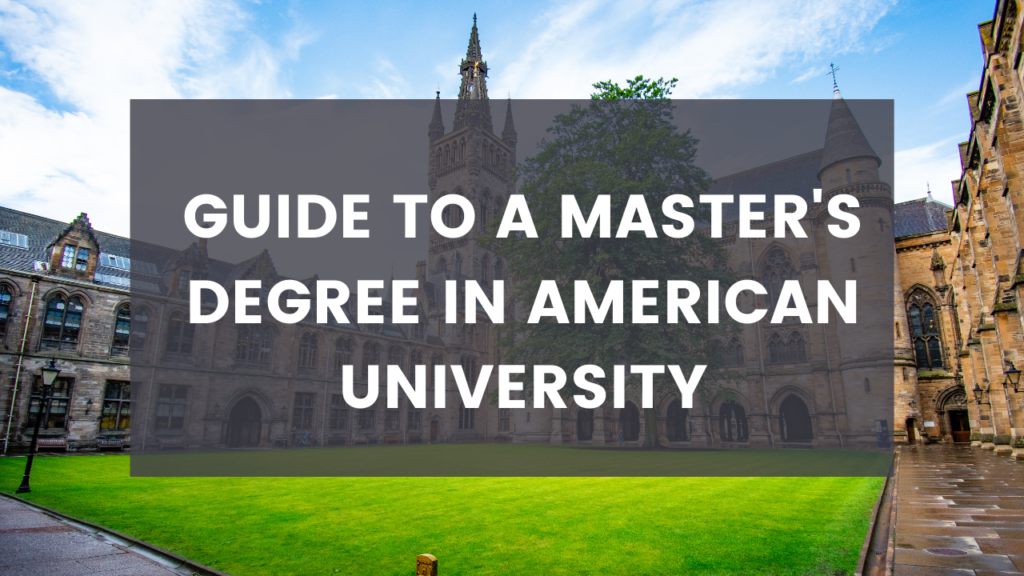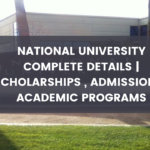A journey to pursue a master’s degree in an American university can be both thrilling and daunting. With a plethora of options and processes to navigate, it’s essential to arm yourself with the right information to make informed decisions. Whether you’re a domestic or international student, this comprehensive guide will provide you with all the details you need to kickstart your academic journey in the United States.
Understanding American Universities:
American universities are renowned worldwide for their academic excellence, diverse student populations, and cutting-edge research opportunities. They offer a wide array of master’s degree programs across various disciplines, ranging from business and engineering to humanities and healthcare.
Choosing the Right Program:
Before diving into the application process, take the time to research and identify the master’s program that aligns with your academic and career goals. Consider factors such as program curriculum, faculty expertise, research opportunities, industry connections, and location preferences.
Admissions Requirements:
Each university and program may have specific admissions requirements, but common prerequisites typically include:
- Bachelor’s Degree: Applicants must hold a bachelor’s degree or its equivalent from an accredited institution.
- Standardized Tests: Most universities require applicants to submit standardized test scores such as the GRE (Graduate Record Examination) or GMAT (Graduate Management Admission Test). However, some programs may waive these requirements or offer alternatives.
- Transcripts: Official transcripts of all previous academic coursework are usually required.
- Letters of Recommendation: Typically, applicants need to submit letters of recommendation from professors, employers, or professionals in the field.
- Statement of Purpose: A well-crafted statement of purpose outlining your academic background, research interests, career objectives, and reasons for choosing the program is essential.
- Resume/CV: A detailed resume or curriculum vitae highlighting your academic achievements, work experience, extracurricular activities, and relevant skills.
- English Proficiency: International students are often required to demonstrate English proficiency through standardized tests such as the TOEFL (Test of English as a Foreign Language) or IELTS (International English Language Testing System).
Financial Considerations:
Financing your master’s degree in the United States can be a significant investment. Tuition fees vary depending on the university and program, with some prestigious institutions commanding higher costs. Additionally, consider other expenses such as housing, health insurance, textbooks, and living expenses.
Scholarships and Financial Aid:
Explore scholarship opportunities, grants, and fellowships offered by universities, government agencies, private organizations, and foundations. Many universities also provide merit-based scholarships, assistantships, and work-study programs to help alleviate financial burdens for deserving students.
Application Process:
Once you’ve identified your preferred program and gathered all necessary documents, it’s time to embark on the application process. Here’s a step-by-step guide:
- Research Deadlines: Be mindful of application deadlines, as they vary depending on the program and university.
- Online Application: Most universities offer online application portals where you can create an account, complete the application form, and upload required documents.
- Application Fee: Pay the application fee, which typically ranges from $50 to $100, although fee waivers may be available for eligible candidates.
- Transcripts: Request official transcripts from all previous institutions attended and have them sent directly to the university’s admissions office.
- Standardized Tests: Register for and take any required standardized tests, ensuring that scores are sent directly to the university.
- Letters of Recommendation: Reach out to potential recommenders well in advance, providing them with sufficient time to write and submit their letters.
- Statement of Purpose: Craft a compelling statement of purpose that highlights your passion, academic achievements, and future aspirations.
- Resume/CV: Prepare a detailed resume or curriculum vitae showcasing your academic and professional background.
- English Proficiency: If applicable, schedule and take English proficiency tests and arrange for scores to be sent to the university.
- Track Application Status: Monitor your application status through the university’s online portal and follow up with any additional requirements or inquiries.
Visa Process:
If you’re an international student accepted into a master’s program in the United States, you’ll need to obtain a student visa (typically an F-1 visa). The process involves:
- Form DS-160: Complete the online nonimmigrant visa application (Form DS-160) and pay the application fee.
- Visa Interview: Schedule and attend a visa interview at the nearest U.S. embassy or consulate in your home country.
- Documents: Bring required documents to the visa interview, including your passport, Form DS-160 confirmation page, SEVIS (Student and Exchange Visitor Information System) fee receipt, Form I-20 (Certificate of Eligibility for Nonimmigrant Student Status), financial documents, and any additional supporting materials.
- Interview Preparation: Prepare for the visa interview by familiarizing yourself with potential questions about your academic background, program of study, intentions to return to your home country, and financial support.
Preparing for Arrival:
Once you’ve secured admission and obtained your student visa, it’s time to prepare for your journey to the United States:
- Housing: Arrange for on-campus or off-campus housing, considering factors such as proximity to campus, amenities, and affordability.
- Health Insurance: Purchase health insurance coverage to comply with university requirements and ensure access to medical care during your studies.
- Orientation: Attend orientation sessions organized by the university to familiarize yourself with campus resources, academic policies, and student support services.
- Academic Preparation: Familiarize yourself with your program’s curriculum, required readings, and expectations to hit the ground running academically.
Embarking on a master’s degree journey in an American university is a transformative experience that offers unparalleled academic and professional growth opportunities. By understanding the admissions process, financial considerations, visa requirements, and preparation steps, you’ll be well-equipped to navigate the complexities of pursuing higher education in the United States. Remember to stay organized, proactive, and resilient as you embark on this exciting chapter of your academic career. Best of luck on your master’s degree pursuit!






